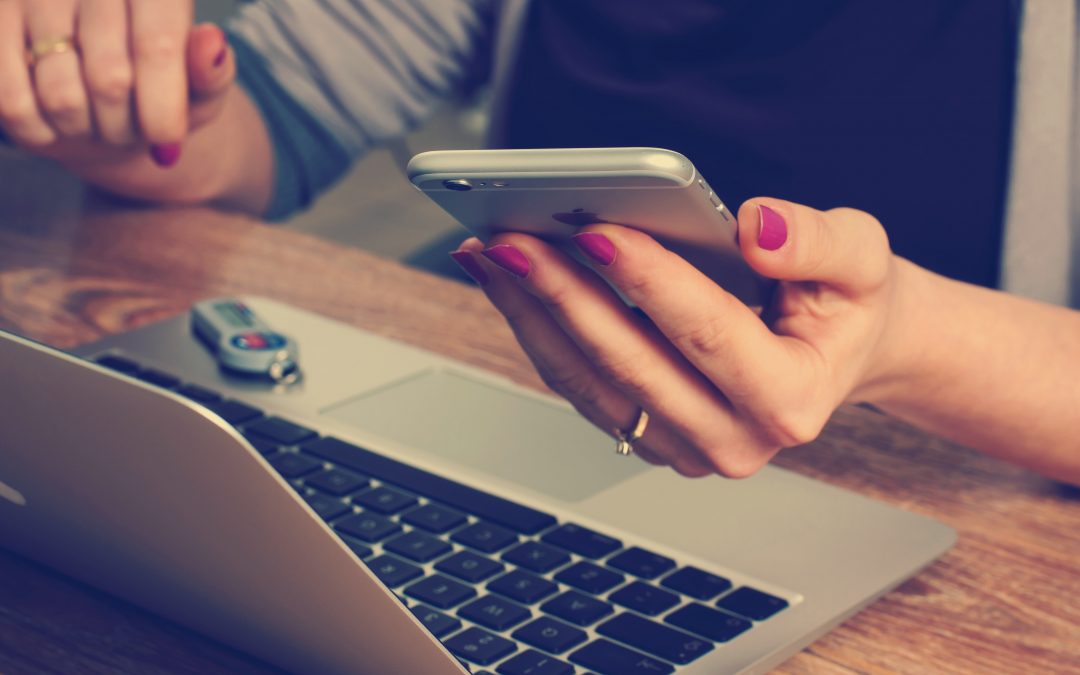By Shay Stinson
Edited by Intisar Seraaj
Marcus Chambliss, 25, says due to growing up “in the middle of the internet boom,” he grew up using technology. He remembers logging into the internet for the first time at 7 years old, he says. So, using technology a case manager for Seraaj Family Homes, Inc. (SFH) in Oxford, Alabama is ideal. Chambliss has been with SFH for more than a year and he says he loves it because the agency’s technological business model gives him work-life balance, reduces stress, and helps him interact with and teach his clients, among other benefits.
Chambliss sat down for a Q&A to discuss using technology at SFH, especially during the COVID-19 quarantine, and how SFH is above the technology curve compared to other social service agencies.
Stinson: Marcus how has the use of technology affected your work style?
Chambliss: It’s so much easier and so much more convenient. For example, when I use the iPad, I could take a picture of a document, scan it securely, and then upload it into the system. I don’t have to take the paper with me. I don’t have to worry about keeping up with it after I have safely scanned and uploaded it. Another thing is technology makes things faster. I can document in real-time. Real-time documentation is a big thing when it comes to (protecting) yourself and lowering the risks for your clients. That’s very important.
Stinson: Are your clients receptive to your use of technology?
Chambliss: Yes. When I use my iPad, if I’m taking (a child) to an appointment, I can let them play games on it. It keeps them entertained and they enjoy that. Another thing I do with the iPad and technology is I use it for educational purposes. There are resources online that are virtual; There’s a lot of free websites that students can get virtual lessons on and [watch] webinars. There are lots of things to help children remotely, especially now, due to coronavirus. We also utilize video conferencing for telehealth appointments and visits. That makes our job a lot easier.
Stinson: What are other personal benefits of using technology for remote work?
Chambliss: It gives us more work-life balance. For example, one day I was [providing respite for] three clients (a sibling group) because their foster parents had to work, and the babysitter had to cancel. At the last minute, the foster parent called me. I already had my schedule made but by using technology and telehealth, I was able to rearrange my schedule and make the right accommodations. While babysitting, I was able to video conference with one of my other clients and the (siblings) were never out of my sight. It would have been a conflict of time, otherwise. With technology, I can multitask. It helps with saving time and being accessible.
Stinson: What advice do you have for a new virtual or remote employee?
Chambliss: You must embrace technology. Once you embrace it, everything becomes easier and smoother. You’ll look back and wonder why you were struggling in the first place. Embrace it, learn it, and ask for help!
Stinson: What challenges do you face as a remote worker and how do you overcome them?
Chambliss: [With] working remotely or from home, there is the potential of being distracted. When you get home, you’re comfortable, which can be distracting. In order to change that, I change my environment. I don’t do work from my bedroom because I know I don’t get any work done in there. I go to the office sometimes. I also have a room in the house where I have a computer and desktop. I isolate myself and I turn off all the distractions, so no music and no phone. Another thing is, while working remotely, you have the option of freedom and flexibility. So, you could go to the park and sit in nature and work. You can go to your back porch [where it’s] quiet and peaceful and listen to the sounds of nature.
Stinson: What tools should a virtual employee have outside of mobile technology to increase their productivity?
Chambliss: You should have a printer and office supplies.
Stinson: What do you think SFH can do to improve with technology?
Chambliss: I think we need more apps. We have an iPad, but I think SFH should have more [recommended] educational apps available for download.
Stinson: Have you used any resources outside of what SFH provides to make you more comfortable with the technology?
Chambliss: Yes, YouTube. It’s an online guide to do whatever you want. The case managers use OneDrive, probably, the most, and Office 365 apps.
Stinson: What are your thoughts on using recreational activities for behavior management?
Chambliss: Recreation is a good therapeutic way for kids to go out and release energy. Many kids would rather be playing video games and stay in the house all day and that affects them socially. Many of my clients have diagnoses like ADHD and behavior disorders. So, they need to release energy. So, we usually play basketball and football, go fishing, jump on a trampoline, ride bikes, go to a lake or nature trail, or play frisbee. Those types of things help them burn energy. When I drop them off to their foster parent, they are relaxed. It helps relieve stress on the foster parent [too].
I’ve noticed, with my clients, they feel more open when doing activities. Especially my newer clients, who are just coming into care and aren’t fully comfortable yet. Being in nature helps me observe, also. Another thing is, when kids are outside, they tend to have a sense of freedom.
Stinson: What kind of concepts can you teach while doing recreational activities?
Chambliss: We work on and discuss personal hygiene. We teach about negative behaviors and how we can improve those behaviors with stress management, by taking it one day at a time and building relationships. Using recreation gives them chance to work our aggression. Some children may have siblings and their relationship with the them may not be great. So, we work on relationship building. We discover things they would like to do such as activities and hobbies.
Stinson: Is there anything else you would like to add?
Chambliss: Seraaj (SFH) has always been three steps ahead with technology. So, when the coronavirus pandemic came about, the only adjustments we had to make were practicing the safety precautions when seeing clients. I think we were already prepared. We were already trained and knew what to do.
Using technology promotes work-life balance. It frees up a lot of time to spend with your family and loved ones, and it’s less paperwork. Less paperwork reduces stress levels in the workplace. I think that once everybody embraces technology, they wouldn’t want to go back to paperwork and documents. Other places don’t have that type of leeway with technology. They don’t have the type of flexibility that Seraaj (SFH) has created.
*This interview has been edited for length and clarity.





